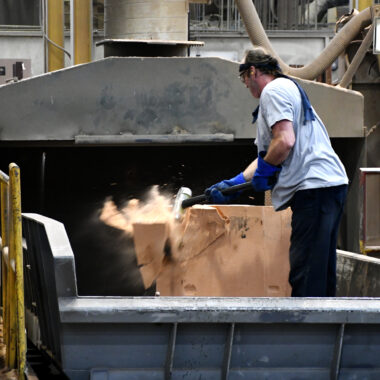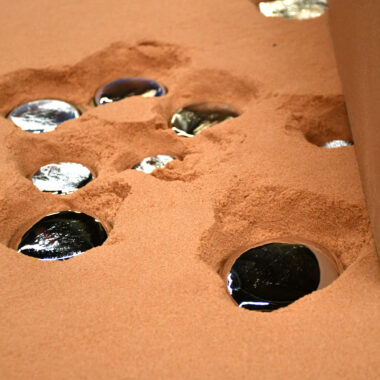Unlocking Quality: Aluminum Casting Techniques & Tips for Superior Outcomes
Unlocking Quality: Aluminum Casting Techniques & Tips for Superior Outcomes
Blog Article
Study the Globe of Light Weight Aluminum Casting: Understanding the Different Methods
Aluminum casting is a fundamental process in the manufacturing sector, with different approaches employed to produce specific and elaborate elements. Understanding the different strategies made use of in light weight aluminum spreading can provide important understandings into the abilities and constraints of each strategy. From the typical sand spreading approach to the advanced die spreading process, each method uses distinct benefits relying on the demands of the project. Checking out these diverse methods can offer a comprehensive sight of the possibilities within the globe of aluminum spreading and exactly how each technique adds to shaping the modern production landscape.
Sand Casting Method
Sand casting, a widely-used approach in aluminum spreading processes, includes developing mold and mildews constructed from compacted sand for putting molten steel. This technique is cost-efficient and very flexible, making it a prominent choice for numerous markets. The procedure begins with the development of a pattern, normally made from wood or steel, which is after that pressed right into the sand to leave an impression. The sand blend, normally silica sand blended with a binder like clay, is securely packed around the pattern to develop a mold tooth cavity. When the mold and mildew is ready, it is firmly positioned in a flask and molten light weight aluminum is put into the dental caries.
After the metal has actually cooled and solidified, the sand mold and mildew is broken away to expose the aluminum spreading. Sand casting enables the production of complicated shapes and big parts that might be costly or tough to produce utilizing various other methods. It is likewise a sustainable strategy as the sand can be recycled and made use of multiple times, minimizing waste in the spreading procedure.
Irreversible Mold And Mildew Strategy

One substantial benefit of the Permanent Mold And Mildew Strategy is the boosted dimensional precision it offers. The steel mold allows for tighter resistances and finer details in the last aluminum spreadings contrasted to sand casting methods. This accuracy makes it a favored selection for applications where tight dimensional control is important, such as in the vehicle and aerospace markets.

Pass Away Casting Process

Investment Casting Method
Utilizing an accuracy casting method, Financial investment Casting Technique includes creating detailed light weight aluminum components by putting molten metal right into a ceramic mold and mildew. This process, likewise known as lost-wax casting, begins with the production of a wax pattern of the desired part (aluminum casting).
The next action entails pouring the liquified light weight aluminum right into the ceramic mold and mildew. The light weight aluminum loads the cavity left by the wax pattern, taking its shape precisely. This method is preferred for its capacity to create intricate shapes with high accuracy and a smooth surface finish. Investment spreading is commonly used for manufacturing elements in sectors where limited resistances and intricate layouts are required, such as aerospace, automotive, and clinical tools. The adaptability and precision of the Investment Casting Strategy make it a useful strategy worldwide of light weight aluminum casting.
Lost Foam Casting Method
Having actually explored the detailed accuracy of Investment Casting Method, the emphasis now shifts to the cutting-edge approach of Lost Foam Spreading in aluminum element manufacturing. Lost Foam Spreading, also recognized as evaporative pattern spreading, is a modern-day strategy where a foam pattern of the wanted part is created and after that coated with a refractory material.
In Addition, Lost Foam Casting is review a cost-efficient process as it reduces the requirement for cores and permits for the manufacturing of light-weight parts. In spite of its benefits, Lost Foam Casting needs careful control of the casting procedure to avoid issues and make certain high quality components.
Verdict
To conclude, light weight aluminum spreading provides a range of methods such as sand casting, long-term mold strategy, die spreading, investment spreading, and lost foam spreading. Each approach has its own advantages and applications, making light weight aluminum casting a versatile and extensively used procedure in different markets. Understanding the differences between these techniques is crucial in choosing one of the most suitable spreading technique for details production demands.
Sand casting, a widely-used approach in light weight aluminum spreading procedures, includes developing mold and mildews made of compacted sand for putting molten steel. aluminum casting.The Irreversible Mold Strategy, like sand casting, is one more widespread method used in light weight aluminum casting procedures, supplying distinctive advantages in terms of mold and mildew reusability and dimensional accuracy. The steel mold and mildew enables for tighter resistances and finer information in the final light weight aluminum castings compared to sand spreading techniques. The two major kinds of die casting are chilly chamber die spreading and warm chamber die casting, each suitable for different types of aluminum alloys.In final thought, aluminum casting provides a variety of methods such as sand why not find out more spreading, long-term mold and mildew strategy, pass away spreading, financial investment casting, and lost foam casting
Report this page